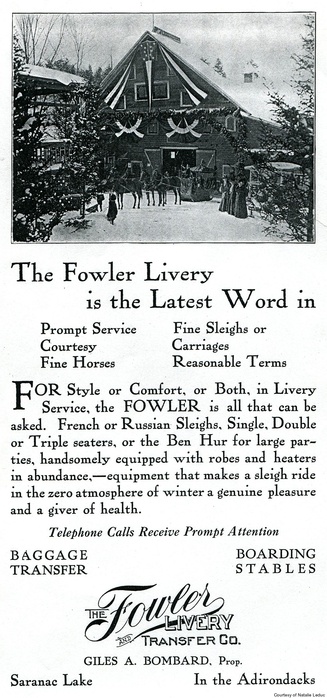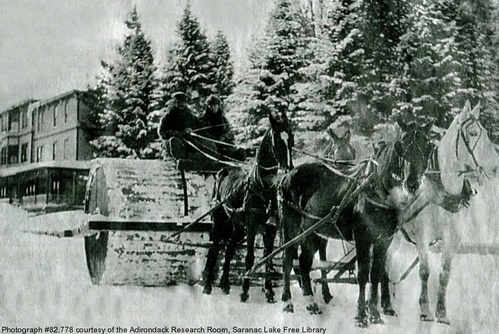 Publication and year unknown The meaning of the term "livery" has changed with the development of the automobile. At the start of the twentieth century, a livery was a place where a horse and wagon or a coach and coachman might be hired. The Sanborn maps of 1916 and earlier show stables behind most buildings; by the 1945 maps, they are gone.
Publication and year unknown The meaning of the term "livery" has changed with the development of the automobile. At the start of the twentieth century, a livery was a place where a horse and wagon or a coach and coachman might be hired. The Sanborn maps of 1916 and earlier show stables behind most buildings; by the 1945 maps, they are gone.
Several liveries developed into related businesses. Maddens turned into a moving and storage company; Latour's sold feed and grain, and then added firewood, coal, fuel oil and even groceries and automobiles.
As the automobile replaced the horse, a livery came to mean a cab stand, and a livery man became a cabby. Livery men, of both kinds, in Saranac Lake included
- Giles Bombard on the corner of Main Street and Broadway
- Brown's Livery at 7 Olive Street, later on Woodruff Street
- Buckley's Livery at the Grand Union
- Bush Livery on Church Street
- Ed Cagle at the Arlington
- Dan Cotter had liveries the Wawbeek and at the Hiawatha Lodge
- Merton Drury at the Riverside Inn
- Mike Egan at the Empire Hotel
- Fowler's Livery at 2 Broadway
- Harry Friedman on Woodruff Street
- Greenough's Livery near the Hotel Ampersand
- Richard Johnson on Main Street, behind the Cutler Building
- Edward LaBounty at 25-27 Woodruff Street
- J.A. Latour (or Latour and Brown's) on Broadway
- Madden's Livery
- Ryan's Livery at 39 Main Street
 And how did people get around in the winter? Giant snow rollers packed the snow so that horses didn't founder in deep drifts. Adirondack Daily Enterprise, January 19, 2013.
And how did people get around in the winter? Giant snow rollers packed the snow so that horses didn't founder in deep drifts. Adirondack Daily Enterprise, January 19, 2013.
Malone Farmer, October 14, 1914
Eldredge & Mason are advertising a big auction at their store on Saturday, having purchased the entire livery equipment of the Saranac Inn, which has been acknowledged to be the best equipped livery in the Adirondacks. All will be disposed of at public sale: The property embraces 20 horses, 25 wagons and carriages, 20 sets of harness and other articles going with a livery.
Sources:
-
Adirondack Daily Enterprise, November 3, 1954, "Our Town"



